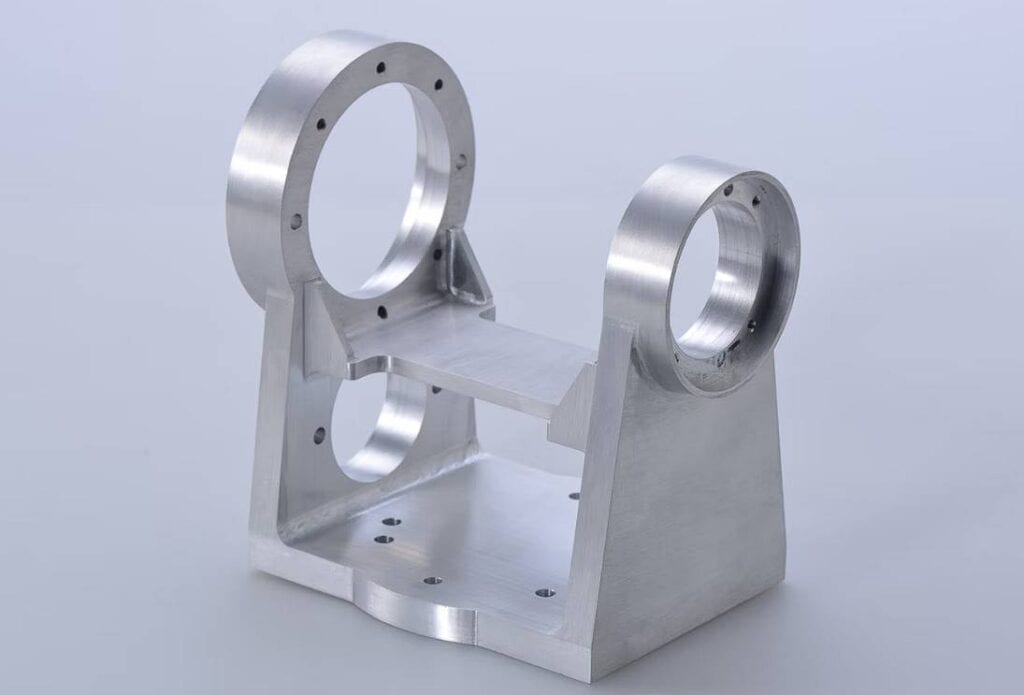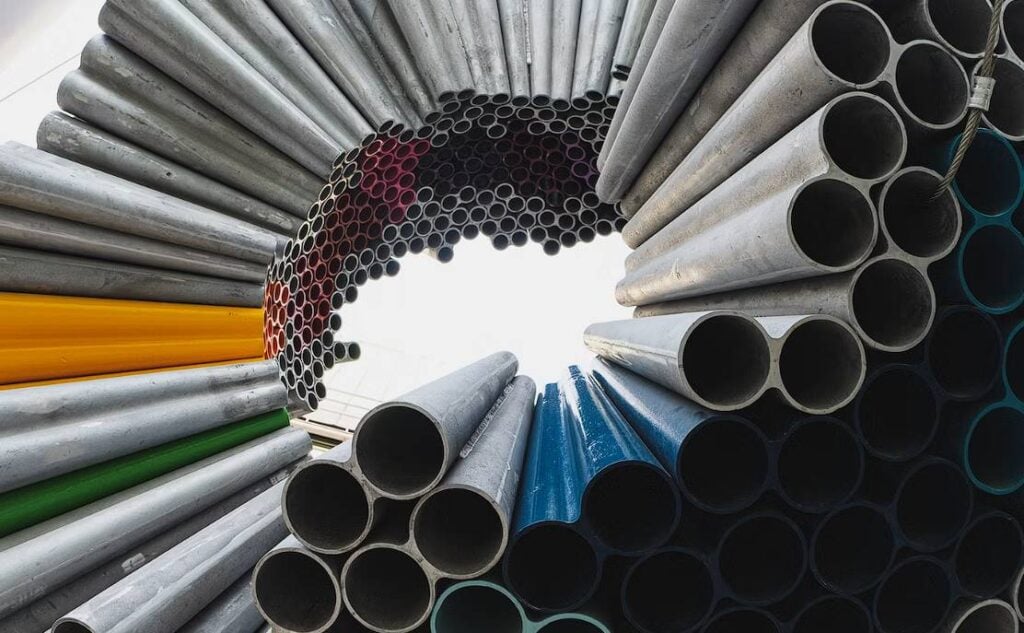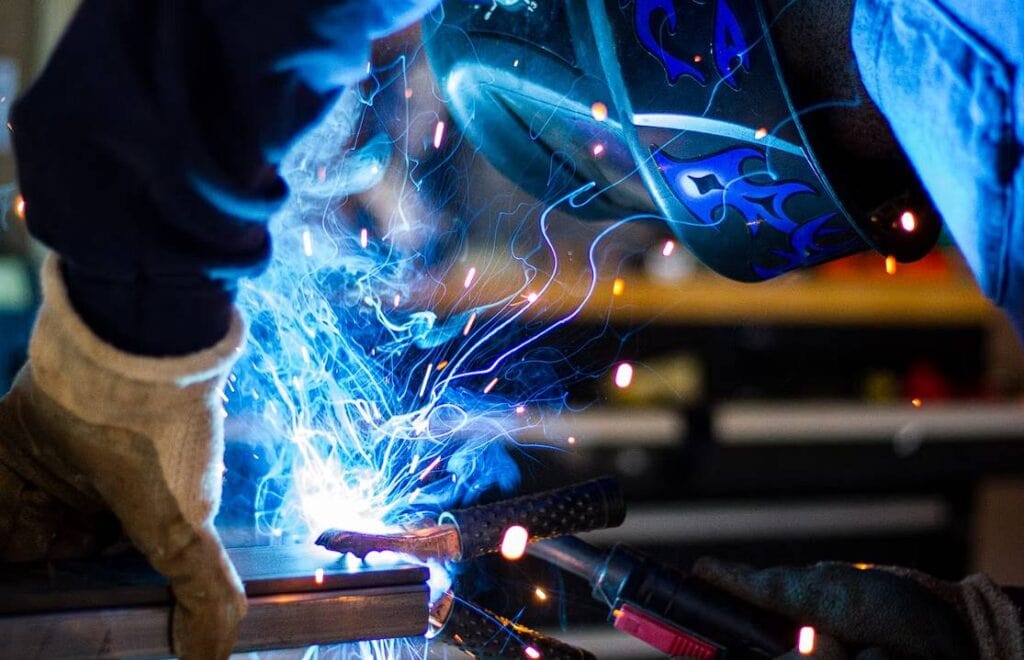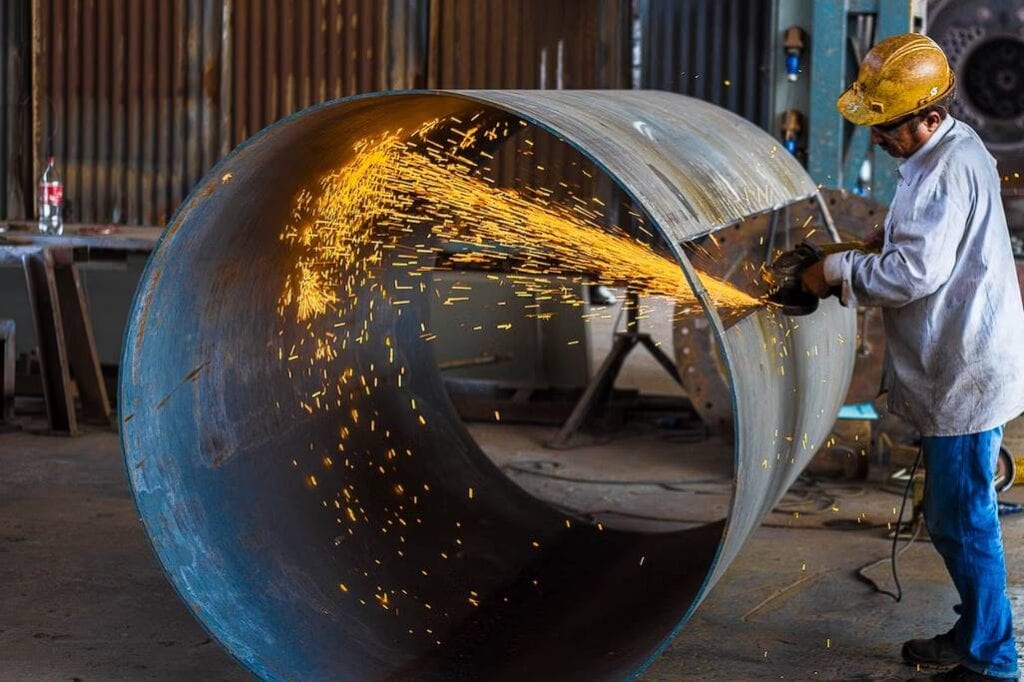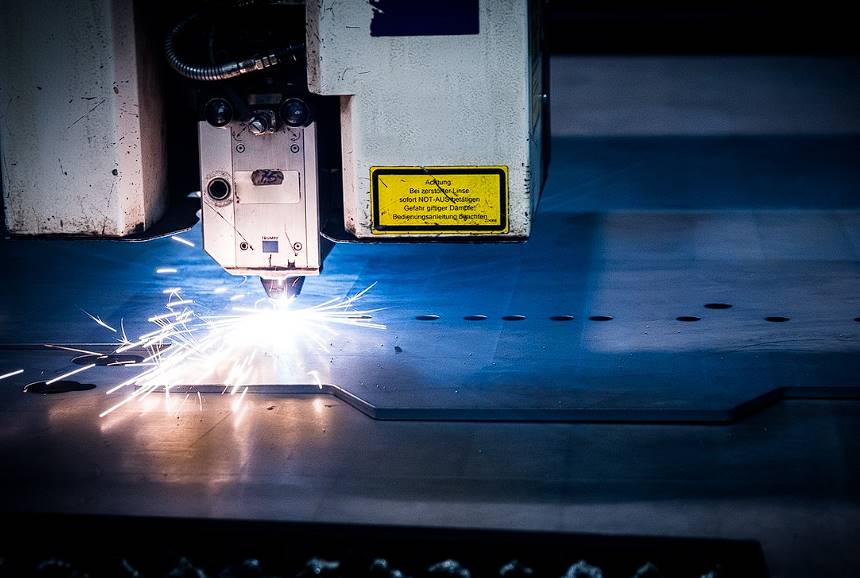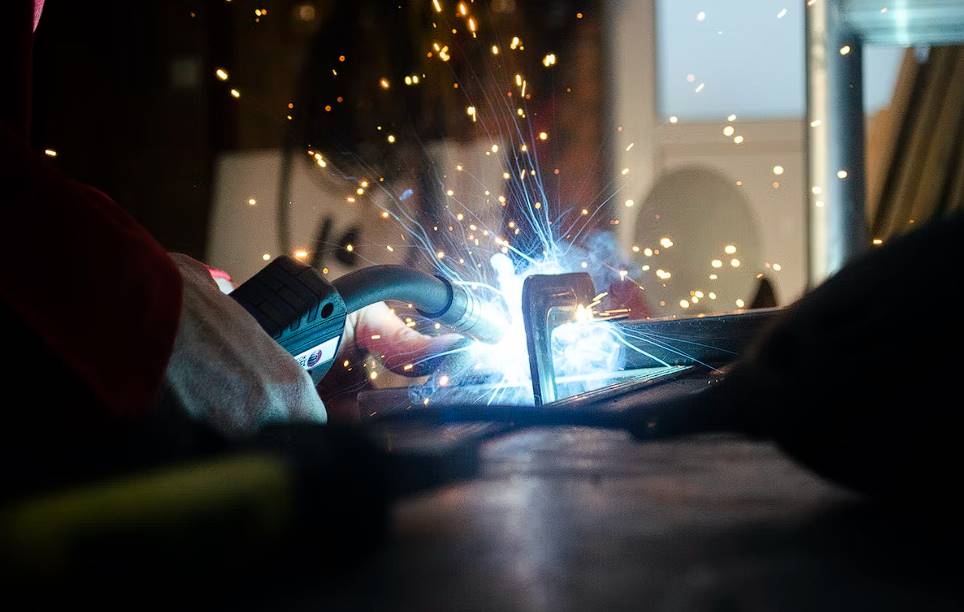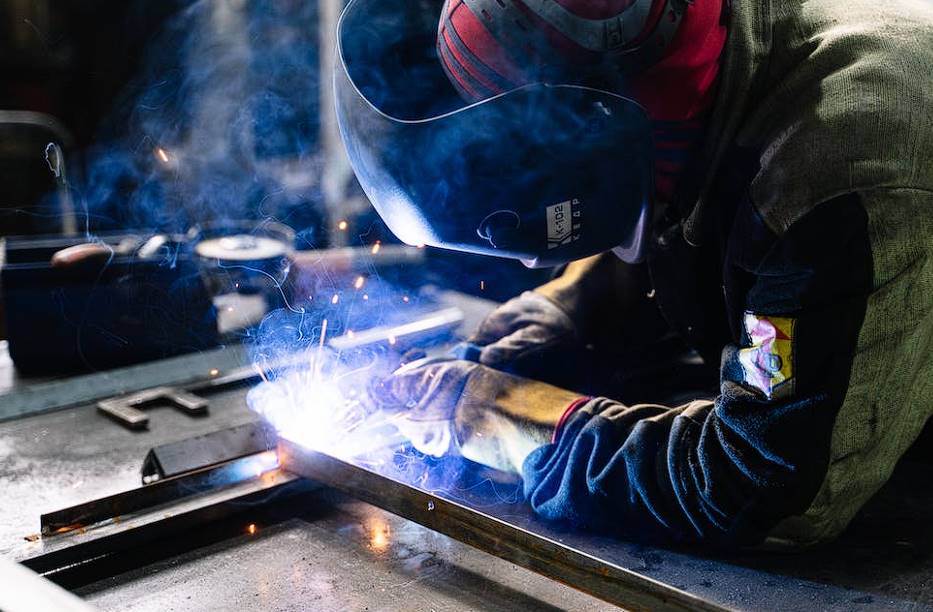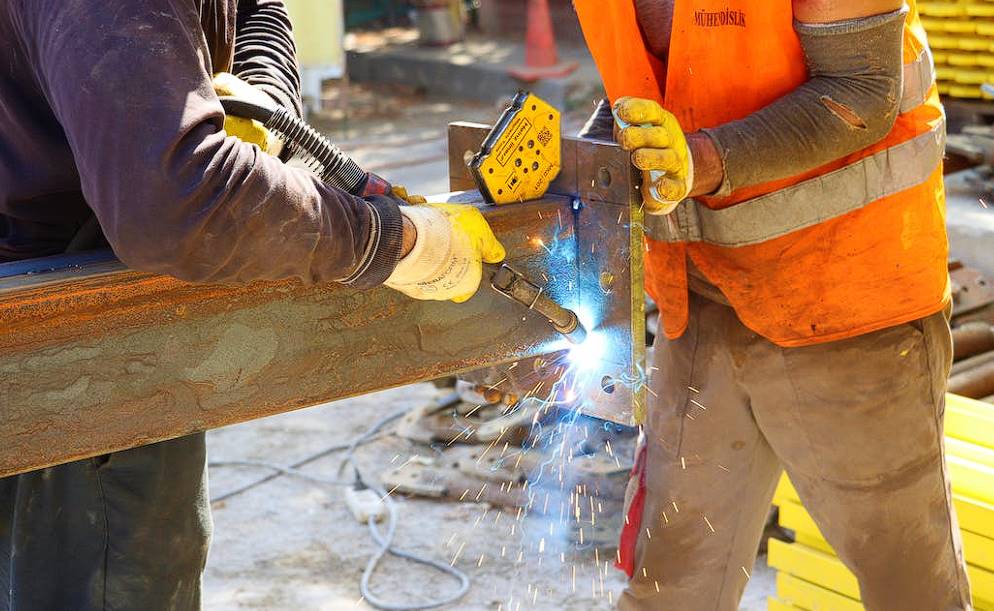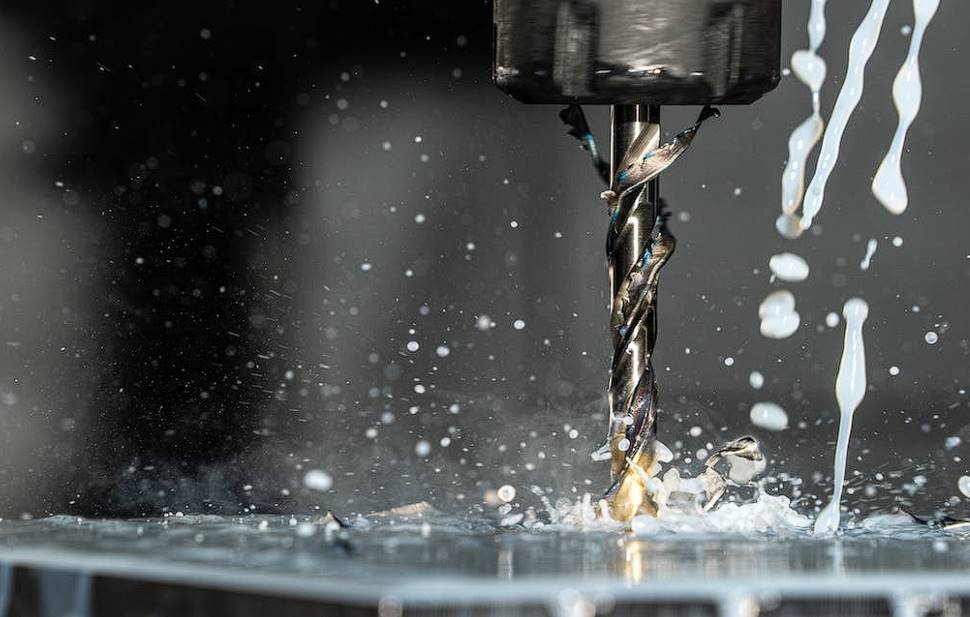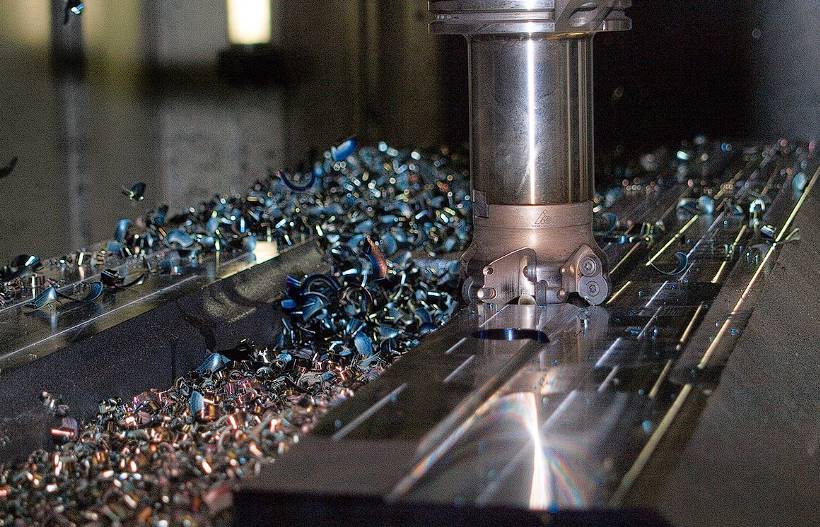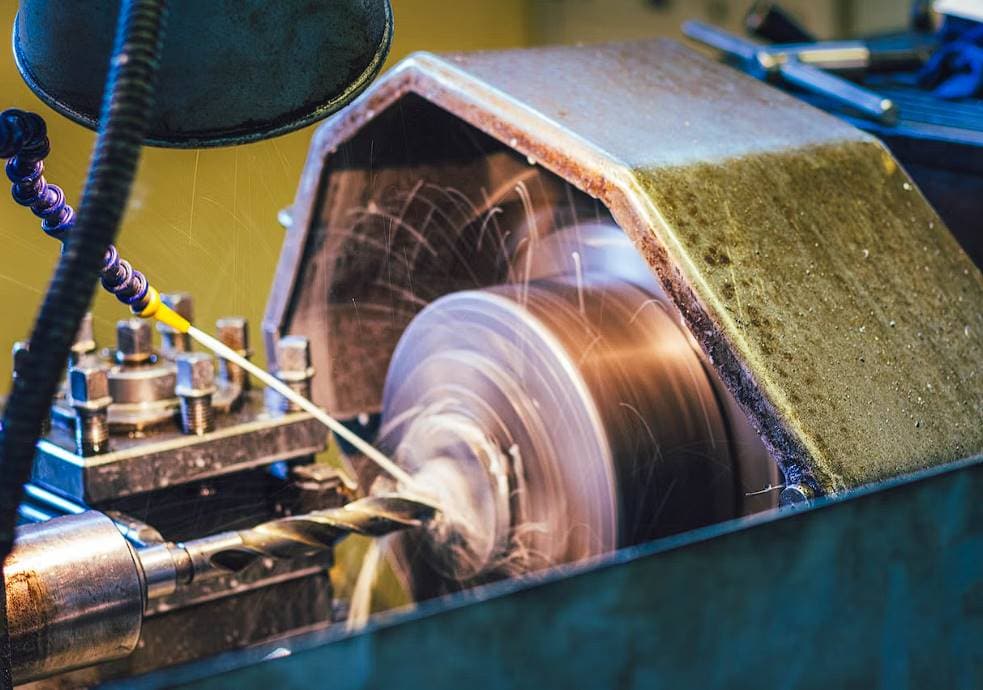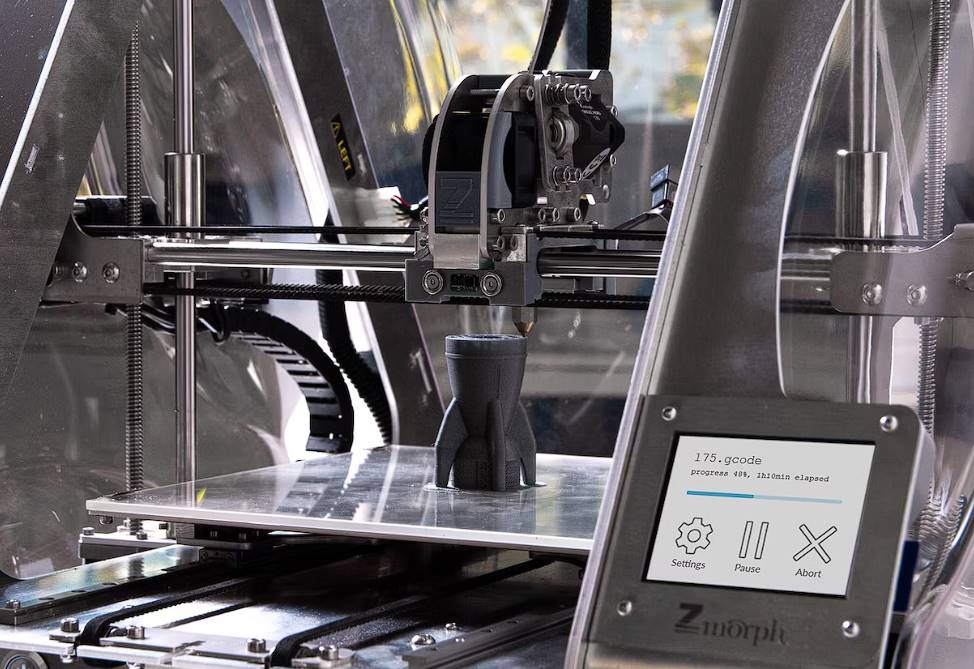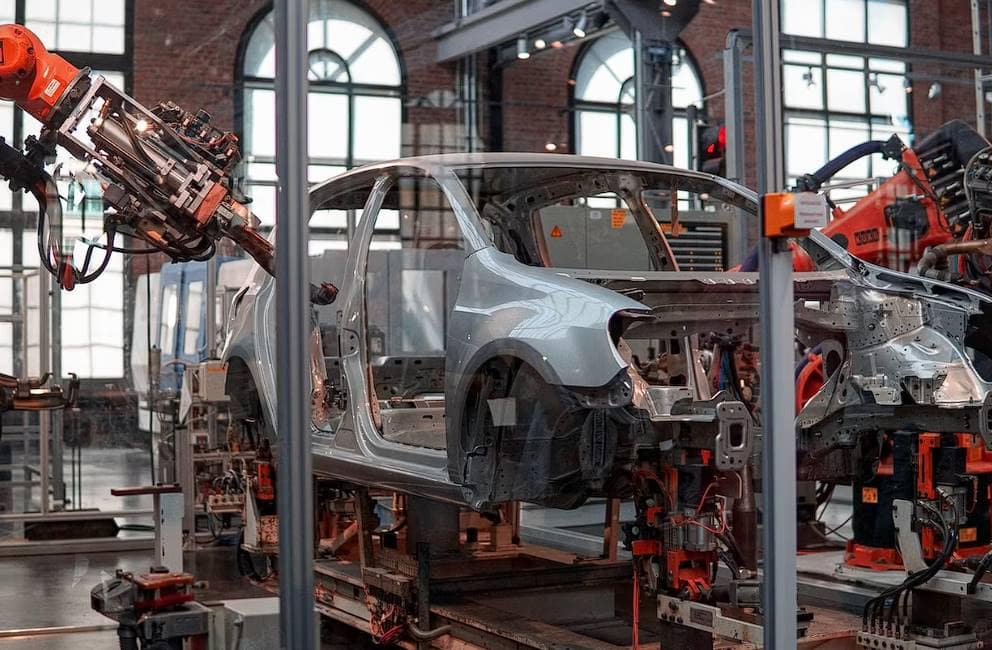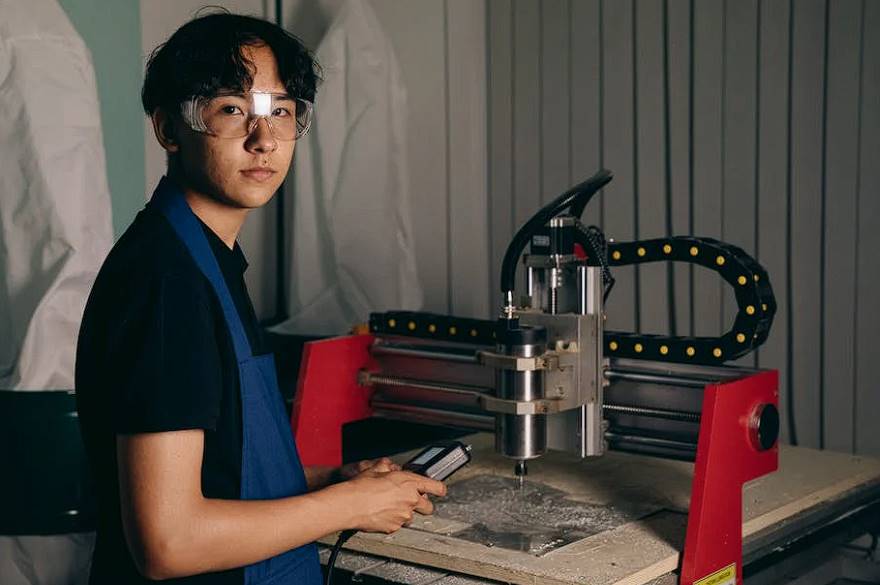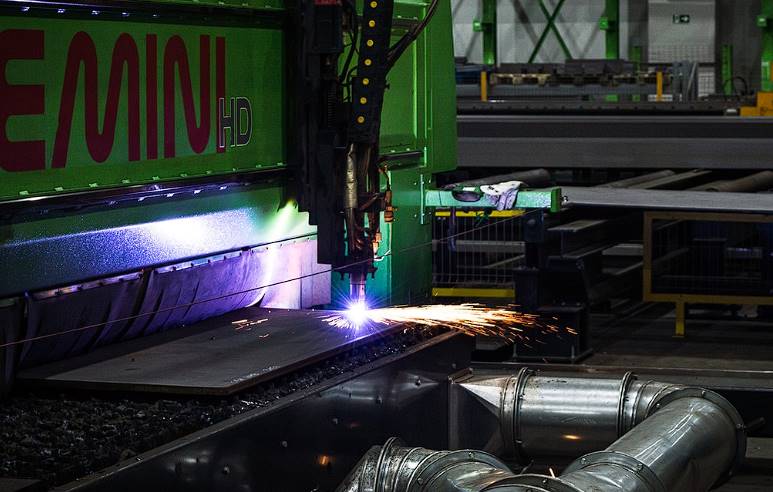Metal spinning, a fascinating and versatile metal-forming process, has been pivotal in manufacturing for centuries. This technique involves rotating a disc or tube of metal at high speed and forming it into an axially symmetric part using a tool. It's a process that combines the artistry of craftsmanship with the precision of modern manufacturing, allowing for the production of parts of various shapes and sizes. Metal spinning is celebrated for its efficiency, flexibility, and the high quality of its components, making it indispensable in various industries, including aerospace, automotive, culinary, and decorative arts.
The history of metal spinning traces back to ancient Egypt, where it was practised by hand. Over the centuries, the process evolved significantly, with each era bringing advancements that enhanced its capabilities and applications. The introduction of the lathe in the Middle Ages marked a significant leap forward, enabling more complex shapes to be spun with greater precision.
The Industrial Revolution further transformed metal spinning with the advent of steam power and, later, electric motors, increasing the process's speed and efficiency. In the 20th century, the development of Computer Numerical Control (CNC) technology revolutionised metal spinning, allowing for unprecedented levels of precision and automation. Today, metal spinning continues to evolve, incorporating advanced materials and techniques to meet the ever-growing demands of modern manufacturing.
Understanding Metal Spinning
Metal spinning, a craft as ancient as the Middle Ages and as innovative as today's leading-edge technologies, is a testament to metalworking's enduring versatility and efficiency.

What is Metal Spinning?
Metal spinning, also known as spin forming, is a process that forms axially symmetric metal parts by rotating a disc or tube of metal at high speeds. This method, which can be performed manually or with CNC lathes, is distinguished by its ability to shape metal without removing any material, contrasting sharply with machining or turning processes that cut away metal to achieve the desired form.
The Evolution and Applications of Metal Spinning
Metal spinning has evolved significantly from its historical roots in the Middle Ages to its widespread acceptance in the last decade. Despite its niche status, the process has found applications in various industries due to its efficiency and versatility. Common shapes produced include cones, bells, hemispheres, and cylindrical forms, serving industries such as:
- Lighting: Creating components like louvres and shades for indoor and outdoor lighting fixtures.
- Air Handling: Manufacturing outlets for HVAC systems, including endcaps and flanges.
- Industrial: Producing fan covers for induction motors, process hoppers, and bowls.
- Décor and Kitchenware: Crafting copper pots and pans, showcasing the process's adaptability to different materials.
- Architectural and Construction: Contributing to iconic structures adorned with over 15,000 stainless steel discs.
- Oil, Gas, and Defence: Supplying tank ends, gas canisters, and components for military equipment.
Key Applications Of Metal Spinning
Metal spinning, which shapes metal into axially symmetric parts, plays a pivotal role across various industries.
Lighting Design and Fixtures
The lighting industry benefits immensely from metal spinning, utilising the technique to create intricate components such as louvres, shades, and gear trays. These components are essential for controlling light distribution, both indoors and outdoors, and form the backbone of functional and aesthetic lighting design. Metal spinning allows for the production of lighting bollards and caps, which are integral to glare control and the overall functionality of lighting fixtures.
Air Handling and HVAC Systems
In the realm of air handling and HVAC systems, metal spinning proves indispensable. The technique is used to manufacture critical components like endcaps, flanges, and attenuators, which are essential for the efficient operation of HVAC systems. These components, often unnoticed, ensure the comfort and air quality in commercial and residential buildings alike.
Industrial Applications
The industrial sector uses metal spinning to create diverse components, such as fan covers for induction motors, process hoppers, and bowls. This wide range of applications showcases metal spinning's ability to produce parts that meet the rigorous demands of industrial machinery and equipment, emphasising the process's adaptability and efficiency.
Culinary and Kitchenware
Metal spinning has found a niche in the culinary world, particularly in producing high-quality kitchenware. From pots and pans to utensils and commercial food preparation equipment, metal spinning facilitates the creation of durable and hygienic products. The process's compatibility with various materials, including copper and stainless steel, makes it a preferred method for culinary applications.
Architectural and Construction Projects
In architecture and construction, metal spinning contributes to buildings' and structures' aesthetics and functionality.
Oil, Gas, and Defense Industries
The oil, gas, and defence sectors utilise metal spinning to produce robust and reliable components. From tank ends and gas canisters to nose cones for aircraft and components for military vehicles, metal spinning supports these industries by providing parts that withstand extreme conditions and rigorous use.
Bespoke Projects and Decor
Metal spinning also caters to bespoke projects and the decor industry, offering custom solutions for unique designs and applications. For art installations, decorative items, or custom furniture, metal spinning accommodates a wide range of creative endeavours, demonstrating flexibility and precision.
The Advantages Of Metal Spinning
Metal spinning involves shaping metal into symmetrical parts, not just about preserving traditional methods but also about leveraging them for contemporary innovation.
Cost-Effectiveness
One of the most compelling advantages of metal spinning is its cost-effectiveness. Unlike other metal forming processes that require expensive moulds or dies, metal spinning utilises simpler, less costly tools. This aspect significantly reduces upfront costs, making it an economical choice for small-batch and large-scale manufacturing. The process is particularly advantageous for custom or prototype parts, where the expense and time to create specific moulds or dies are impractical.
Versatility
Metal spinning stands out for its remarkable versatility. It can accommodate a wide range of metals, including aluminium, stainless steel, copper, and brass. This flexibility allows manufacturers to select the most suitable material for specific applications, considering weight, durability, and corrosion resistance. Moreover, metal spinning is adept at producing a variety of shapes and sizes, from simple cones and cylinders to more complex geometries, catering to diverse industry needs.
Superior Strength and Durability
The metal spinning process enhances the strength and durability of the final product. As the metal is formed, its grain structure is aligned with the shape of the part, which can improve its mechanical properties and resistance to impact and fatigue. This intrinsic strengthening makes spun metal parts ideal for applications requiring robustness and longevity, such as aerospace, automotive, and industrial sectors.
Quick Turnaround Times
Metal spinning offers rapid production capabilities, contributing to shorter lead times. The process is inherently faster than other forming methods, especially for prototypes or limited runs, where the time and cost of creating specific tooling are not feasible. This speed does not compromise quality; metal spinning delivers high-quality parts in a fraction of the time, enabling manufacturers to meet tight deadlines and respond swiftly to market demands.
Precision and Consistency
With CNC (Computer Numerical Control) technology advancements, metal spinning has achieved unprecedented precision and consistency. CNC metal spinning lathes can produce parts with tight tolerances, ensuring each component meets stringent specifications. This precision is crucial for industries where even minor deviations, such as medical devices, aerospace components, and precision instruments, can have significant implications.
Environmental Sustainability
Metal spinning is an environmentally friendly process. It generates minimal waste since the metal is formed rather than cut away, making it a more sustainable option than other manufacturing methods that produce significant scrap. Additionally, using recycled materials further enhances its eco-friendly credentials, aligning with the growing emphasis on sustainable manufacturing practices.
Challenges And Considerations In Metal Spinning
Material Selection and Behavior
One of the primary challenges in metal spinning is choosing the right material for the job. Different metals and alloys exhibit unique properties that can significantly affect the outcome of the spinning process. Factors such as flexibility, strength, and thickness play crucial roles in determining how a material will behave under the stresses of spinning. For instance, while aluminium and soft steels may be more forgiving, harder materials like stainless steel or high-strength alloys require greater precision and control. Understanding the nuances of each material is essential to avoid tearing, wrinkling, or uneven thickness.
Design Complexity and Tolerances
As the demand for more complex and precise components grows, metal spinning faces the challenge of meeting tight tolerances and intricate designs. The limitations of the spinning process, particularly with manual or less advanced equipment, can pose significant hurdles. Achieving uniform thickness across a part, especially in more elaborate shapes, requires a deep understanding of the process and the skilful manipulation of tools. The transition to CNC metal spinning, while offering greater precision, also demands programming and machine operation expertise.
Equipment and Technology Integration
Integrating new technologies, such as CNC lathes and automation, brings its challenges. The initial investment in advanced equipment can be substantial, and the learning curve for operators can impact productivity. Furthermore, maintaining these high-tech machines requires specialised knowledge and regular upkeep to ensure optimal performance. Balancing the cost and benefits of technology adoption is critical for businesses transitioning from traditional to modern metal spinning practices.
Quality Control and Consistency
Maintaining consistent quality is a perennial challenge in metal spinning. Variations in material properties, operator skill, and machine settings can all lead to discrepancies in the final product. Implementing rigorous quality control measures ensures that each spun component meets the required specifications. This may involve regular inspections, testing, and precision measurement tools. The stakes are even higher for industries where precision is paramount, such as aerospace and medical devices.
Environmental and Safety Considerations
Like any manufacturing process, metal spinning must consider environmental and safety considerations. The use of lubricants and coolants, noise levels, and the potential for injuries from machinery are all concerns that need to be addressed. Implementing safe practices, proper training, and environmental controls is crucial to protect workers and minimise environmental impact.
Technological Advancements In Metal Spinning
Metal spinning has undergone a remarkable evolution driven by technological advancements. Once performed manually on simple lathes, this age-old craft has transformed into a sophisticated manufacturing process. Today, it leverages cutting-edge technology to meet the demands of modern industries.
CNC Metal Spinning
Computer Numerical Control (CNC) technology has been a game-changer for metal spinning. CNC metal spinning lathes allow for precise control over the forming process, producing parts with exceptional accuracy and consistency. This technology has expanded metal spinning capabilities, making it possible to produce complex shapes that were difficult or impossible to achieve with manual spinning. CNC technology enhances precision and increases production speed and efficiency, meeting high-volume manufacturing needs.
Automation and Robotics
Automation and robotics have further advanced the metal spinning process, reducing the need for manual labour and minimising human error. Automated metal spinning cells, equipped with robotic arms, can load and unload parts, perform quality checks, and even change tools automatically. This level of automation increases throughput and ensures consistent quality across large production runs. Moreover, it allows for more efficient use of materials and resources, contributing to sustainable manufacturing practices.
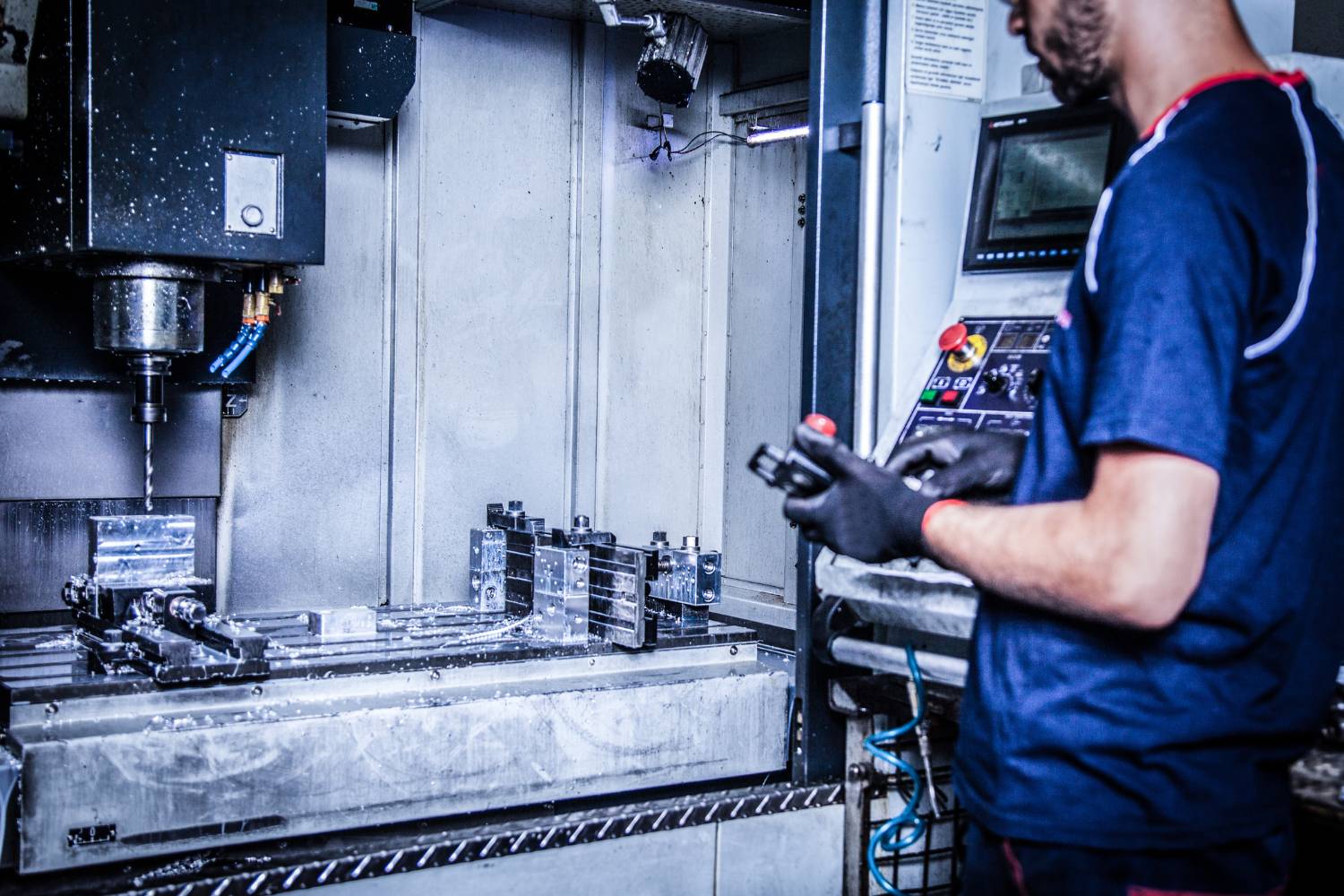
Multi-Axis Spinning
The development of multi-axis spinning technology represents another leap forward. Traditional metal spinning involves rotating a piece of metal around a single axis. However, multi-axis spinning machines can manipulate the workpiece in multiple directions simultaneously, allowing for the creation of more intricate and detailed shapes. This capability opens up new possibilities for design and innovation in industries requiring complex geometrical parts, such as aerospace and automotive engineering.
Advanced Materials and Applications
Technological advancements in metal spinning have also expanded the range of materials that can be spun. While metals like aluminium, copper, and steel have been staples of the spinning process, newer materials, including high-strength alloys and composites, are now being used.
These materials require specialised knowledge and equipment but offer superior properties, such as increased strength-to-weight ratios and corrosion resistance. Working with a broader array of materials enables metal spinning to serve a wider range of applications, from medical devices to architectural components.
Digital Design and Simulation
Integrating digital design tools and simulation software has significantly impacted metal spinning. Designers and engineers can now create detailed 3D models of parts and simulate the spinning process before any physical production begins. This capability allows for the optimisation of designs, reducing material waste and identifying potential issues early in the development phase. Digital design and simulation not only streamline the manufacturing process but also foster innovation by enabling the exploration of new concepts and designs.
Conclusion
Metal spinning is a flexible way to shape metal used in industry for hundreds of years. It combines old-fashioned skills with modern accuracy. A metal disc or tube is rotated at very high speeds and then shaped into a symmetric part along its length with a tool. Metal spinning is highly regarded for its speed, adaptability, and high-quality parts, which makes it an essential tool in many fields, such as aerospace, automobile, culinary, and decorative arts.
An ancient Egyptian woman spun metal by hand, which is where the art form got its start. The process has changed significantly, with big steps forward in the Middle Ages, the Industrial Revolution, and the rise of Computer Numerical Control (CNC) technology. Today, metal spinning is still changing. New materials and methods are being used to keep up with modern manufacturing's needs.
Lighting design and fixtures, air handling and HVAC systems, kitchenware and cooking tools, building and construction, the oil, gas, and defence industries, as well as custom projects and home decor, are some of the most important areas where metal spinning is used. Metal spinning is used in the lighting business to make complex parts like louvres, shades, and gear trays that are needed to control how light is distributed. Metal spinning makes important parts for HVAC and air handling systems, like endcaps, flanges, and attenuators, needed to work well.
Metal turning has many benefits, such as being cost-effective, flexible, and useful in many situations. It uses easier-to-use and less expensive tools, making it a good choice for small and large-scale production. Metal spinning can also be done with many different metals, so makers can choose the best material for each job by looking at weight, durability, and resistance to corrosion.
Metal spinning is a very efficient way to make things that make finished goods stronger and last longer. This makes it perfect for aerospace, automotive, and industrial use. Because CNC technology has improved, it can turn around jobs quickly and accurately every time. This method creates little trash and can be used with recycled materials, which aligns with the growing focus on environmentally friendly ways to make things.
But metal spinning has problems, like choosing the right material, making designs that are hard to understand, and meeting standards. Different metals and alloys have different qualities that change how the spinning process turns out. To avoid problems like tears, wrinkling, or uneven thickness, it's important to understand these factors. To switch to CNC metal turning, you need to know how to program and run a machine.
Along with new technologies like CNC lathes and robotics come new problems that need to be solved. Buying high-tech equipment can cost a lot at first, and workers may need time to get used to it. This can slow down production. These high-tech tools need to be serviced regularly by people who know how to do it.
A constant problem in metal spinning is keeping the quality high. Differences in the finished product can happen because of differences in the material's properties, the skill of the operator, and the settings on the machine. Strict quality control methods must be implemented to ensure that every spun part meets the requirements.
Safety and the environment are also very important. The use of lubricants and coolants, noise levels, and the chance of getting hurt by machines must be examined.
Thanks to technological advances, metal spinning has gone from being a simple hobby to a sophisticated way to make things. With CNC technology, the cutting process can be precisely controlled, speeding up and improving production efficiency. Automation and robots have made spinning metal even better by cutting down on mistakes and manual labour. Multi-axis spinning technology opens up new ways to create and develop new ideas in fields that need to make parts with complicated shapes.
Content Summary
- Metal spinning is a versatile metal-forming process that has been essential in manufacturing for centuries.
- It involves rotating a metal disc or tube at high speed and forming it into an axially symmetric part.
- This process combines craftsmanship artistry with modern manufacturing precision.
- Metal spinning produces parts of various shapes and sizes with efficiency, flexibility, and high quality.
- It is indispensable in the aerospace, automotive, culinary, and decorative arts industries.
- The history of metal spinning dates back to ancient Egypt, where it was practised by hand.
- Over time, the process evolved significantly, with advancements enhancing its capabilities and applications.
- The introduction of the lathe in the Middle Ages marked a significant advancement, enabling more complex shapes.
- The Industrial Revolution further transformed metal spinning with steam power and electric motors.
- The 20th century saw the revolution of metal spinning with the development of CNC technology.
- Today, metal spinning continues to evolve with advanced materials and techniques.
- Metal spinning, known as spin forming, shapes metal without removing material, unlike machining or turning.
- It has evolved from its Middle Ages roots to widespread acceptance in the last decade.
- Metal spinning serves various industries by producing common shapes like cones, bells, and cylindrical forms.
- It creates lighting components, HVAC system outlets, industrial machinery parts, and decorative kitchenware.
- Metal spinning contributes to architectural and construction projects with intricate metal components.
- It supplies critical components for the oil, gas, and defence sectors.
- The lighting industry benefits from metal spinning for creating intricate components for light distribution.
- Metal spinning is indispensable for manufacturing critical components in air handling and HVAC systems.
- The industrial sector relies on metal spinning to create diverse components for machinery and equipment.
- In the culinary world, metal spinning is crucial for producing high-quality kitchenware.
- Metal spinning enhances architectural designs and contributes to the durability of construction projects.
- It supports the oil, gas, and defence industries by providing robust and reliable components.
- Metal Spinning offers custom solutions to bespoke projects and the decor industry.
- The cost-effectiveness of metal spinning comes from its use of simpler, less costly tools.
- Metal spinning's versatility allows it to accommodate various metals and produce various shapes.
- The process enhances the strength and durability of the final product, ideal for aerospace, automotive, and industrial applications.
- Metal spinning offers rapid production capabilities, contributing to shorter lead times.
- CNC technology has brought unprecedented levels of precision and consistency to metal spinning.
- Metal spinning is environmentally friendly, generating minimal waste and allowing the use of recycled materials.
- Choosing the right material is a primary challenge in metal spinning, affecting the outcome of the process.
- Meeting tight tolerances and intricate designs is a challenge due to the limitations of the spinning process.
- Integrating new technologies in metal spinning requires substantial investment and specialised knowledge.
- Maintaining consistent quality is challenging in metal spinning, necessitating rigorous quality control measures.
- Metal spinning must address environmental and safety considerations, including lubricants and noise levels.
- CNC technology has been a game-changer for metal spinning, enhancing precision and production speed.
- Automation and robotics in metal spinning reduce manual labour and minimise human error.
- Multi-axis spinning technology allows for the creation of more intricate and detailed shapes.
- Technological advancements have expanded the range of materials that can be spun, including high-strength alloys.
- Digital design and simulation tools have significantly impacted metal spinning, optimising designs and fostering innovation.
- Metal spinning's history showcases its evolution from a manual craft to a sophisticated manufacturing process.
- The process's adaptability to different materials highlights its role in various applications.
- Metal spinning's contribution to high-quality component production underscores its value in precision-demanding industries.
- The evolution of metal spinning technology reflects the manufacturing sector's adaptability and innovation.
- The challenges in metal spinning, including material selection and design complexity, highlight the required skill.
- The advancements in metal spinning technology demonstrate the industry's commitment to efficiency and quality.
- Metal spinning's environmental sustainability aligns with the growing emphasis on eco-friendly manufacturing practices.
- Applying metal spinning in bespoke projects and decor showcases its versatility and creative potential.
- Combining CNC technology and automation in metal spinning represents the fusion of tradition and modernity.
- Metal spinning continues to be a critical process in manufacturing, evolving with technological advancements to meet future demands.
Frequently Asked Questions
Metal spinning, also known as spin forming, is a metalworking process where a disc or tube of metal is rotated at high speed and formed into an axially symmetric part using a tool. This technique can shape metal without removing any material, making it distinct from other machining processes that cut away metal to achieve the desired shape.
Many metals can be used in metal spinning, including aluminium, stainless steel, copper, brass, and even some alloys. The choice of material depends on the desired properties of the final product, such as strength, weight, corrosion resistance, and appearance.
Metal spinning has diverse applications across various industries. It is commonly used to produce parts for the aerospace and automotive industries, lighting fixtures, kitchen utensils, decorative items, and components for HVAC systems. The process is valued for efficiently producing strong, lightweight, and precise parts.
Metal spinning is highly cost-effective, especially for small to medium-sized production runs and prototypes. Unlike stamping or casting, it requires less expensive tooling, which can be modified or changed at a lower cost. Metal spinning also offers superior material strength due to work hardening during the forming process, and it can achieve complex shapes with high precision.
Metal spinning can be automated using Computer Numerical Control (CNC) technology. CNC metal spinning lathes allow for precise control over the spinning process, enabling the production of parts with tight tolerances and consistent quality. Automation increases efficiency and production speed and reduces the potential for human error, making it ideal for high-volume manufacturing.


